第33章 CHRISTIAN SCIENCE AND THE BOOK OF MRS. EDDY(6)
A word upon a question of authorship. Not that quite; but, rather, a question of emendation and revision. We know that the Bible-Annex was not written by Mrs. Eddy, but was handed down to her eighteen hundred years ago by the Angel of the Apocalypse; but did she translate it alone, or did she have help? There seems to be evidence that she had help. For there are four several copyrights on it--1875, 1885, 1890, 1894. It did not come down in English, for in that language it could not have acquired copyright--there were no copyright laws eighteen centuries ago, and in my opinion no English language--at least up there. This makes it substantially certain that the Annex is a translation. Then, was not the first translation complete? If it was, on what grounds were the later copyrights granted?
I surmise that the first translation was poor; and that a friend or friends of Mrs. Eddy mended its English three times, and finally got it into its present shape, where the grammar is plenty good enough, and the sentences are smooth and plausible though they do not mean anything. Ithink I am right in this surmise, for Mrs. Eddy cannot write English to-day, and this is argument that she never could. I am not able to guess who did the mending, but I think it was not done by any member of the Eddy Trust, nor by the editors of the 'Christian Science Journal,' for their English is not much better than Mrs. Eddy's.
However, as to the main point: it is certain that Mrs. Eddy did not doctor the Annex's English herself. Her original, spontaneous, undoctored English furnishes ample proof of this. Here are samples from recent articles from her unappeasable pen; double columned with them are a couple of passages from the Annex. It will be seen that they throw light. The italics are mine:
1. 'What plague spot, 'Therefore the efficient or bacilli were (sic) gnawing remedy is to destroy the (sic) at the heart of this patient's unfortunate belief, metropolis... and bringing by both silently and audibly it on bended knee? arguing the opposite facts in Why, it was an institute that regard to harmonious being had entered its vitals (sic) representing man as that, among other things, healthful instead of diseased, taught games,' et cetera. (P. and showing that it is 670, 'C.S.Journal,' article impossible for matter to suffer, entitled 'A Narrative - by to feel pain or heat, to be Mary Baker G. Eddy.') thirsty or sick.' (P. 375,Annex.)2. 'Parks sprang up (sic)... electric street cars run 'Man is never sick; for (sic) merrily through several Mind is not sick, and matter streets, concrete sidewalks cannot be. A false belief and macadamised roads dotted is both the tempter and the (sic) the place,' et cetera. tempted, the sin and the (Ibid.) sinner, the disease and its 3. 'Shorn (sic) of its cause. It is well to be calm suburbs it had indeed little in sickness; to be hopeful is left to admire, save to (sic) still better; but to such as fancy a skeleton understand that sickness is not above ground breathing (sic) real, and that Truth can slowly through a barren (sic) destroy it, is best of all, for breast.' (Ibid.) it is the universal and perfect remedy.' (Chapter xii., Annex.)You notice the contrast between the smooth, plausible, elegant, addled English of the doctored Annex and the lumbering, ragged, ignorant output of the translator's natural, spontaneous, and unmedicated penwork. The English of the Annex has been slicked up by a very industrious and painstaking hand--but it was not Mrs. Eddy's.
If Mrs. Eddy really wrote or translated the Annex, her original draft was exactly in harmony with the English of her plague-spot or bacilli which were gnawing at the insides of the metropolis and bringing its heart on bended knee, thus exposing to the eye the rest of the skeleton breathing slowly through a barren breast. And it bore little or no resemblance to the book as we have it now--now that the salaried polisher has holystoned all of the genuine Eddyties out of it.
Will the plague-spot article go into a volume just as it stands? I think not. I think the polisher will take off his coat and vest and cravat and 'demonstrate over' it a couple of weeks and sweat it into a shape something like the following--and then Mrs. Eddy will publish it and leave people to believe that she did the polishing herself:
1. What injurious influence was it that was affecting the city's morals?
It was a social club which propagated an interest in idle amusements, disseminated a knowledge of games, et cetera.
2. By the magic of the new and nobler influences the sterile spaces were transformed into wooded parks, the merry electric car replaced the melancholy 'bus, smooth concrete the tempestuous plank sidewalk, the macadamised road the primitive corduroy, et cetera.
3. Its pleasant suburbs gone, there was little left to admire save the wrecked graveyard with its uncanny exposures.
The Annex contains one sole and solitary humorous remark. There is a most elaborate and voluminous Index, and it is preceded by this note:
'This Index will enable the student to find any thought or idea contained in the book.'
VNo one doubts--certainly not I--that the mind exercises a powerful influence over the body. From the beginning of time, the sorcerer, the interpreter of dreams, the fortune-teller, the charlatan, the quack, the wild medicine-man, the educated physician, the mesmerist, and the hypnotist have made use of the client's imagination to help them in their work. They have all recognised the potency and availability of that force. Physicians cure many patients with a bread pill; they know that where the disease is only a fancy, the patient's confidence in the doctor will make the bread pill effective.